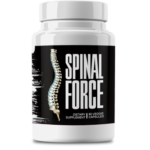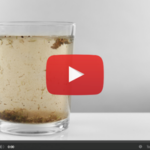This Village-Made Chinese Pain Reliever Eliminates Back And Joint Pain!
Natural vs. Medical: Best Treatment for Gout in Big Toe Joint

Diving into Gout: Why Your Big Toe Might Be Feeling the Heat
Gout is one of those pesky forms of arthritis that really knows how to make itself known, often zeroing in on the joints, especially the big toe. If you've ever felt that sudden, sharp pain along with redness and swelling, you know it can be a real pain—literally. Getting a handle on the best ways to treat gout in that big toe joint is key to easing those symptoms and getting back to enjoying life. In this guide, we'll chat about both natural and medical treatments, giving you the lowdown on how to take control of this uncomfortable condition.
What Exactly is Gout and Why Does It Have a Thing for the Big Toe?
Gout happens when uric acid levels in your blood decide to throw a party, forming crystals in the joints. The big toe is a favorite hangout because it's often under pressure and subject to temperature changes, making it a prime spot for those pesky crystals. This leads to inflammation and a fiery pain that can feel like your toe's caught fire.
Spotting the Early Signs of Gout
Catching gout early is a game-changer for managing it effectively. The first signs usually show up as sudden joint pain, swelling, and redness, often in the dead of night. If this sounds familiar, it's a good idea to see a healthcare provider who can run a blood test or check your joint fluid to confirm it's gout.
Why Jumping on Gout Treatment Early Matters
Tackling gout quickly can save your joints from damage and prevent complications down the road. Without treatment, you risk facing chronic arthritis or even kidney stones. Early intervention not only takes the edge off the immediate pain but also cuts down on the frequency and intensity of future flare-ups.
Finding the Right Way to Treat Gout in Your Big Toe
When it comes to treating gout in the big toe, you've got options ranging from lifestyle tweaks to medications. Each has its perks, and the best choice often boils down to your individual needs.
Natural vs. Medical Treatments: What's the Difference?
Natural treatments focus on changes to your diet and everyday habits, while medical treatments involve prescriptions from your doctor. Both aim to lower uric acid levels and keep symptoms in check.
What Influences Your Treatment Choice?
Choosing between natural and medical treatments depends on several factors, like how severe your symptoms are, any other health issues you might have, and personal preferences. Your healthcare provider can help steer you in the right direction.
Busting Common Myths About Gout Treatment
There's a lot of misinformation about gout treatment. Some people think it's just an older person's problem or that natural remedies don't work. Clearing up these myths is vital to understanding all the treatment options available to you.
Exploring Natural Remedies for Gout in the Big Toe
Natural remedies can be a great way to manage gout and ward off flare-ups. They typically involve diet and lifestyle changes, offering a more holistic approach to health.
The Impact of Dietary Changes
Your diet can have a big impact on uric acid levels. Cutting back on foods high in purines, like red meat and seafood, while upping your intake of fruits, vegetables, and whole grains can help manage gout. Staying hydrated is also key, as it helps flush out uric acid.
Herbs and Foods that Fight Inflammation
Herbs like nettle and turmeric are known for their anti-inflammatory powers. Adding these to your diet, along with foods like cherries and ginger, can help ease the inflammation and pain that come with gout.
Lifestyle Tweaks: Exercise and Staying Hydrated
Getting regular exercise and keeping your weight in check can reduce how often you have gout attacks. Plus, drinking plenty of water helps dilute uric acid in your blood, cutting down the risk of crystal formation.
Diving into Medical Treatments for Gout
Medical treatments can offer quick relief, especially in severe cases. Prescription medications are designed to ease pain and lower uric acid levels.
Prescription Meds: What They Do
Common meds include NSAIDs, colchicine, and corticosteroids, which help with pain and swelling. Long-term use of drugs like allopurinol can also keep uric acid levels in check.
The Value of Professional Medical Guidance
Seeing a healthcare provider is crucial for figuring out the right medication and dosage, as well as keeping an eye on any side effects. Professional advice ensures your treatment is both safe and effective.
Weighing the Side Effects
While meds are effective, they can come with side effects like stomach issues or allergic reactions. Discussing these with your doctor can help you manage risks and get the most out of your treatment.
Natural vs. Medical Treatments: A Side-by-Side Look
Both natural and medical treatments have their pros and cons. Understanding these can help you make a smart decision about managing gout.
How Fast Do They Work?
Medical treatments often bring quicker relief, while natural remedies might take a bit longer to show their benefits but can be great for ongoing management.
Managing Gout for the Long Haul
Both types of treatment can be effective in the long run. Combining lifestyle changes with medication might offer the best protection against future attacks.
Cost and Ease of Access
Natural remedies tend to be more budget-friendly and accessible, while medical treatments might be necessary for severe cases, even though they can cost more.
The Ups and Downs of Natural Treatments for Gout
Natural treatments win points for their holistic approach and minimal side effects, but they might not cut it in severe cases.
Why Go Natural?
Natural treatments support overall wellness and are easy to implement. They're a good fit for those who prefer to steer clear of pharmaceuticals.
When Natural Isn't Enough
In cases of intense pain or frequent attacks, natural remedies alone might not be enough. Adding medical treatments could be necessary.
Stories from the Real World
Many people have found success with natural remedies, reporting fewer flare-ups and better joint health. But remember, results can vary from person to person.
Medical Treatments for Gout: Pros and Potential Pitfalls
Medical treatments are highly effective but come with their own set of challenges, like potential side effects and costs.
Why Medical Treatments Work
These treatments deliver fast relief and are crucial for managing severe gout. They're backed by science and widely trusted.
Handling the Risks
Though effective, medications can cause side effects. Keeping in touch with your healthcare provider helps you manage any risks.
Success Stories from Patients
Many have found relief through medical treatments, experiencing fewer attacks and a better quality of life. These stories underline the power of professional medical care.
Wrapping Up
Deciding on the Best Gout Treatment for Your Big Toe
When it comes to choosing the best treatment for gout in your big toe, think about how severe your symptoms are and what your personal health goals look like. Both natural and medical treatments have a role to play in managing this condition.
Striving for Optimal Joint Health
Bringing together natural and medical treatments can provide thorough relief and long-term management of gout. By staying informed and working closely with healthcare professionals, you can aim for the best joint health possible and reduce gout's impact on your life.








